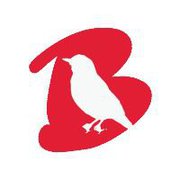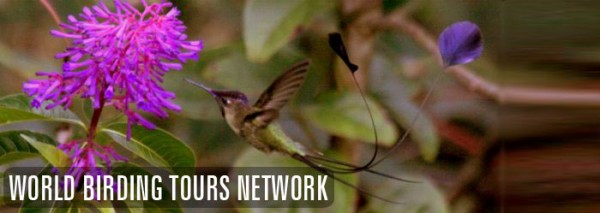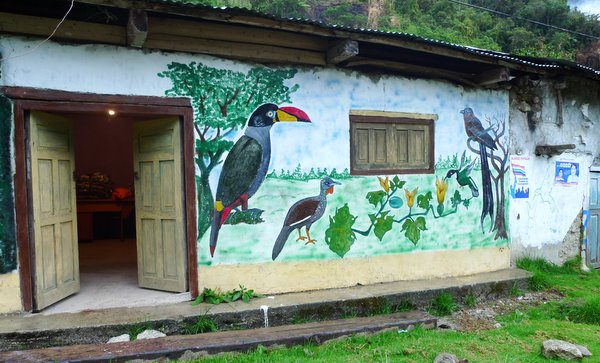Chumming on Pelagics
Gary Allport of Birdlife International recently placed a question on Seabird-News about chumming techniques to attract seabirds while doing pelagic birding. He was overwhelmed with replies and decided to summarize what he had learned in an article, which Gary has allowed to be shared and spread. Therefore, his summary appears here in my blog. Thanks for sharing Gary.
General reviews and techniques
It seems that there are precious few actual written pieces on chumming, indeed the only two sources cited were Tony Pym’s posting of a floating chum block recipe and the piece on storm-petrel techniques in Bob Flood & Bryan Thomas’ excellent paper Identification of ‘black-and-white’ storm-petrels in Annexe 2 “Chum and chumming” (paper can be downloaded via the Scilly Pelagics website). I was also pointed to a useful discussion thread on BIrdforum .
Based on the fulsome thoughts of many I have pulled them together into the following groups of techniques:
- Making a trail – dripping oil from a bottle, trailing chum in a mesh bag etc
- Feeding – dead fish, frozen blocks etc
- Holding birds as attractant
- Using Dimethyl Sulphide
Plus some words of caution and trivia.
Some terms that Flood & Thomas (F&T) use which are good to keep for consistency are ‘Soft’ Chum, such as ground fresh fish, fish guts and livers, and ‘Hard’ chum such as fish bones and heads. Also “Chum-and-drift” the practice of working an area of sea using the wind or very slow steaming downwind to create a slick upwind and a scent trail downwind.
Making a trail
The method of attracting many seabirds to the boat for viewing is to use a combination of scent, slick and food items to lay a trail that draws birds and channels them into the boat. This can be done whilst steaming from place to place, or as a Chum-and-drift setup. The techniques are:
Oil bottle – in its simplest form this is done by punching a small hole into the base of a plastic water bottle full of fish oil and then tying some string around the neck and dangling it off the railings of the boat. There are more sophisticated versions using a pipe fixed into the neck of the bottle and a pinch bolt to regulate the flow but there were no mentions of write ups of exactly how to do this.
The quantities used seem to vary from several litres down to one pint for a day trip. I think this also reflects the type of oil used.
Many people use Cod Liver Oil (CLO) but there are lots of warnings that the CLO available for medicinal purposes are treated to remove the scent and are ineffective. No-one mentioned a good source of raw CLO, although some referred to Fish Oil Concentrate but it’s not clear what that is or how to get hold of it. Other fish oils mentioned were Tuna Oil and Menhaden Oil (Brian Patteson amongst others, mentions using the latter). Others use vegetable oil as a carrier or slick former, mixed either with CLO (3 litres CLO with 20 litres veg oil was one recipe) or with oils from tinned and bottled fishes. Anchovies, sardines and pilchards were mentioned although the general feeling was that these blends were not as effective as CLO. (One birder deliberately went out on an Anchovy fishing boat owner simply because he knew that the whole boat would form its own slick…). There is also a feeling from some that veg oils should never be used as they are not naturally occurring in the marine environment and their properties once mixed with seawater and cast onto birds’ plumage are unknown and could be harmful.
Soft chum – mashed fresh fish and oils mixed are trailed from the vessel when steaming or are used on a chum-and-drift. When steaming, frozen blocks are often trailed and these have a very high density of soft chum i.e. very little water frozen in, and are placed in a mesh bag (onion sacks were mentioned as good for this purpose by several people). In NZ the ‘Berley Bomb’, a commercially available grind up of salmon scraps frozen into 5kg blocks for fishing uses, works very well for this. Chunks of unfrozen soft chum are also used but it needs to be treble-bagged whilst steaming else it will all wash away very quickly. When adopting a chum-and-drift tactic for stormies then it is recommended to use unfrozen chum in a single bag secured just below the surface to create the slick (F&T). Fish livers also get special mention as they float and are especially attractive in their own right. These can be put whole into a mesh box (as is done off Kaikoura) or chopped up into tiny pieces (F&T) as part of the mix. Note that old or rotting fish is apparently not as attractive as fresh fish.
Popcorn is also used in the un/frozen blocks of soft chum either ground up into tiny pieces and infused with eau de chum thereby (F&T), or whole popcorn, mixed in and left to infuse of its own accord. The ground up popcorn is thought to carry the oil further on the surface and is apparently taken by storm petrels; it also has the advantage of attracting fewer gulls in this form if that’s what’s needed (see below). The intact popcorn also carries oil but less of it, is not taken by stormies but does attract gulls and several folk also mentioned that the pale floating grains help show up where the oil trail is lying when routing the boat back along existing oil trails, and in both finding and pointing out birds feeding along the trail. Rice bubbles and cornflakes have also been used but both seem to float below the surface film and drift less quickly than oil, get separated from the slick and so scatter the birds. Note that there are some who feel that any of these floating additives are not great for seabirds to eat, especially processed popcorn.
F&T highly recommend using a grinder to make soft chum. The exact details of the grinder are not given but heavy duty manual or motorized machines are available from the USA where it seems that there is a whole chum-based micro-industry – see for instance https://www.chum-grinders.com/ or https://www.castnetworld.com/fishchumholders.html . I think that these are just big meat grinders in truth so anything that’s used to make minced meat would do the trick I suspect.
Hard chum – a whole battery of fairly sordid things have been trailed behind boats in the name of slicking. Dead fish, especially large oily fishes which have been filleted, or just the heads, have been used with success. But there were also mentions of punctured sausages, beef suet, a rotting cabbage (not so stupid – see below) and a dead fulmar (well they are very oily and stinky…). One person mentioned following the slick from a dead Cuvier’s Beaked Whale. The key point though is that hard chum generally work best when the boat is steaming so that small chunks of chum get washed off and sit in the wake; not so good when the boat is at rest.
There were also the comments that laying trails only work in fairly calm sea conditions with light breezes that will carry the scent but not so rough that the oil slick gets dispersed too quickly before the birds get close enough. Note also you might have to wait 15-30 minutes before the first birds come gliding up the driftline.
Feeding birds
Food is generally used to bring birds closer in to the boat for closer and longer viewing – the holding of birds as an attractant in themselves is treated below.
Feeding of seabirds has been done in many, many different ways but mostly as some form of soft chum either thrown over the side or in mesh bags, wire mesh boxes etc. There are also the opportunistic approaches of other food sources such as trawlers or bait balls which are not covered here.
The main recent advance in this regard has been the use of soft chum frozen into blocks. This idea is mostly credited to Hadoram Shirihai and the most recent recipes used in the Pacific, and with further recommendations, are helpfully posted on Tony Pym’s website. However, a couple of people told me that shark divers have been using these frozen blocks for a very long time and they know them as “Chumsicles” (I was also told that chum is known as rubby-dubby by some shark fishers). The advantage of feeding with frozen blocks is that they can be made up so that they float so the food stays on the surface (most fish meat will quickly sink out of sight in sea water) and that the food will be gently dispersed over a period of time as the block defrosts. Birds can also feed directly off the chumsicle too, holding them close to the boat yet longer.
The key point here seems to be to ensure that there is a very large amount of freshwater used in the recipe in order to guarantee that the block will actually float when flung over the side. Several people reported that their lovingly made beautiful chumsicle simply sank like a stone into the depths much to their dismay. If fish dust and oil are used in the recipe then the chumsicle is quite light in itself and 25-30% water is fine but if pieces of fish and meal are used then there needs to be 50% freshwater plus 50% meal/pieces and oil to guarantee a floater. It was also pointed out that freshwater is less dense than seawater so do use fresh. 10-12 kilo blocks are recommended. The other point to think about before making the blocks is exactly how they will be carried onto the boat. Shaping them to fit into you cooler box is recommended! Also bag up and separate blocks in the cool box else they might all freeze together and then require hacking up on deck.
One other advantage of these blocks is that they are simple to use, less messy and smelly, and this can be helpful with certain boat owners who are not used to birders and their chums. To mention here also that a tarpaulin draped over the working area helps, and do take a pair of long arm rubber gloves to keep hands clean and so quickly free to grab the binocs.
The feeding technique is to drop a frozen block over the side then steam uplight and heave to at about 80 metres and wait. Birds will mostly come from downwind following the scent trail so note both wind direction and light carefully. Additional floating food such as livers or oil soaked popcorn can be tossed in once birds are around the boat. When birds are engaged in feeding from the block itself then closer approaches can be made.
The other food which I had never heard of as chum before is beef suet. This seems to work well since it floats, is cheap and easy to get hold of, is relatively easy to handle and can be used as either big blocks which birds have to come in to and tear pieces off, or cut right down to milled fine scale pieces which stormies like (Black, Leach’s and Band-rumped all mentioned, though Least did not take it). It does not carry scent so it needs to be used in tandem with other more smelly attractants.
Holding birds as an attractant
The above mentioned techniques will draw in many pelagic species which in themselves may help to attract other perhaps even more desirable birds. The key thing here is that both higher flying birds, which show above the horizon further away, and birds exhibiting feeding behaviours – hovering, dip diving or circling – will draw in birds that will not necessarily come to chum. Species mentioned were Skuas/Jaegers, several Pterodromas (Black-capped rarely comes to chum, Tahiti too).
It is clear that in some areas ‘less interesting’ species such as gulls or in some places frigates can be actively fed and thus held behind the boat for longer, indeed in the case of some gulls they can be drawn well offshore and kept by the boat to act as attractants. Popcorn and bread thrown from the back of the boat, actively feeding such species (on some pelagic trips there is a designated person simply doing this) to keep them tagging along helps to maintain a clamour of birds around the boat. In most circumstances this is thought to work well but there are certain circumstances where there are mixed views on this. Some people said that gulls, in particular, deter certain storm petrels and also some of the smaller alcids like Cassin’s Auklet, Xantus Murrelet.
Dimethyl Sulphide
I was rather surprised by the strong and uniformly negative response to my enquiry on this. Having looked at the paper on Tony Pym’s website (Nevitt & Bonadonna. here https://www.seabirding.co.uk/documents/DimethylSulphide.doc ) I was assuming that someone would have sussed out how to use it productively, but everyone who responded said that it is tricky to get hold of and only comes in a highly concentrated form. The liquid itself is quite dangerous and can apparently damage human sense of smell and it is supposed that it may have negative effects on birds (F&L). The recommendation is to steer clear.
I guess many of these problem are to do with the concentration of the DMS supplied commercially and having looked at the paper on Tony’s site it seems it does not easily dilute. The authors used Ethylene Glycol (best known as car antifreeze) to dilute it but there was no talk of its properties in oil. One person pointed out that it is widely used in the perfume industry and is the source of the smell of cabbage, indeed apparently the smell of cooked and rotting cabbage is actually DMS and one person even tried cabbage at sea but with no results (rotted and trailed). It sounds mad but one wonders if boiled cabbage steeped in oil might work?!
Some words of caution
There were wise words of caution expressed in some of the emails. Several stressed that chum is an attractant to things other than seabirds especially sharks and in certain places sea lions. The latter can be overzealous and are a potential hazard when in a small boat.
The other point is to please bear in mind the sensitivity of the birds especially when near to colonies and especially chumming breeding birds etc. Carrying gulls behind a boat out to a breeding island of vulnerable breeding species was also a caution expressed.
Trivia – chumming for the land-based seawatcher
I was also reminded of a hair-brained scheme mentioned in one of Anthony McGeehan’s articles, in Dutch Birding I think. He described a conversation with an old Irish coastal seawatcher who concocted the notion of “The Chum Cannon”. The idea was to fire a packet of chum offshore into an onshore wind, in order to bring seabirds, especially stormies, closer inshore of the seawatching point as the slick drifted closer on the breeze. At the time of the article I don’t think frozen chum had been thought of so the problem posed was how to propel what would effectively be a liquid – but with modern day thinking the concept of the frozen chum projectile might be a reality…
So I hope that that is a useful pull together of ideas. I am conscious that there are still quite a few things not covered, like recipes for chum and more of the actual practicalities (where do you get raw CLO? Can anyone recommend a specific chum grinder? etc) but as I say I hope that this helps to be going on with. It has certainly given me plenty of food for thought before heading off from Maputo again.
Finally Check out Lima pelagics.





 Show the community an example similar to their reality, which has become a booming eco-tourism project. Well, this is what Kolibri Expeditions did, when we brought 6 campesinos from Central Peru to Mindo in Ecuador. Here are two older posts that gives you the right background to this idea.
Show the community an example similar to their reality, which has become a booming eco-tourism project. Well, this is what Kolibri Expeditions did, when we brought 6 campesinos from Central Peru to Mindo in Ecuador. Here are two older posts that gives you the right background to this idea.

